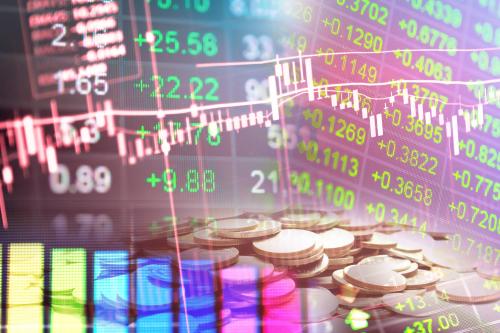COVID-19 is, first and foremost, a public health crisis, but it has had significant economic effects. With tens of millions of Americans told to stay home, the U.S. is at the beginning of what will surely be one of the deepest recessions in history. We hosted a virtual event on COVID-19 and the economy recently with Janet Yellen, the former Federal Reserve chair who is now at the Hutchins Center at Brookings, and Brookings scholars Adam Looney, Amy Liu, and Louise Sheiner. You can watch the hour-long video here. We fielded several questions from viewers, but didn’t have time to get to everyone. So here are answers to some of the questions we didn’t get a chance to answer.
The following answers are from Janet Yellen.
Q: How well prepared is the typical American household for the coming shock of lost jobs and income, in light of a decade of debt-deleveraging, continuous job growth, and low unemployment, coupled with weak wage growth and rising income inequality?
A: “It’s true that we’ve had a decade of debt deleveraging and strong job growth. On average, debt burdens and financial obligations have fallen to relatively low levels. That positions the median household well to deal with the coronavirus shock. But households differ, and averages don’t reveal the poor financial position of many households going into this crisis. Federal Reserve statistics show that a large share of Americans couldn’t come up with $400 to deal with an emergency. Many households have little savings and a lot of debt and are very poorly positioned to deal with the impact of job loss and increases in health care expenditures.”
Q: What do you think about proposals to expand International Monetary Fund lending by issuing more Special Drawing Rights?
A: “It’s true that less developed countries are especially challenged by the pandemic, and a large number are turning to the IMF for help. A Special Drawing Rights (SDR) allocation is one way the IMF could respond. The last SDR allocation was in 2009, in response to the global financial crisis. However, in such an allocation, all members receive SDRs based on their IMF quotas, so a large share of the money goes to developed countries like the United States. It’s unclear that this strategy would provide sufficient funds to stressed emerging markets. An alternative is to enhance the IMF’s emergency lending capacity and allow the Fund to allocate it to those most in need. My preference would be for this latter strategy. “
The following answers are from David Wessel.
Q: If the $2 trillion recovery package is smaller than optimal to achieve stated objectives, how should a next recovery package be structured and advanced through Congress?
A: That depends, in part, on what happens with the virus. It’s likely that state and local governments will need more federal aid. Some components–such as the expansion of unemployment insurance–may need to be extended if the recession persists. Both House Democrats and President Trump are talking about using the next bill as the vehicle for the long-promised increase in federal infrastructure investment.
Q: Which sectors of the economy are likely to recover the fastest? Which the slowest?
A: No one can know for sure, and a lot depends on how we move from stay-at-home to go-back-to-work. It seems unlikely that we’ll move instantly back to business as usual. We’ll probably be avoiding large crowds for a while. In the first stage, people will go back to the factory or the office. Then I suspect there’ll be a lot of business for barbershops and beauty salons once they reopen, and for retail that doesn’t involve large numbers of people in a crowded space. Only when people feel safer–and the government relaxes guidance–will restaurants, movie theatres, concerts, and sporting events resume.
Another issue is whether we should expect structural economic changes as a result of this pandemic. Will the disruption to global supply chains lead to a mini-revival in selected sectors in manufacturing? Will the surge in online education, telemedicine, and online conferencing persist? Hard to know. We’ll probably be investing more in public health–at least, I hope so. But we don’t really know what, or how long-lasting, the after-effects of the COVID-19 crisis will be.
Q: Do the environmental benefits seen as a result of this global slowdown (less smog, less turbid water bodies, etc.) hint at the potential positive impacts of a Green New Deal?
A: Not really. We have to find a better way to curtail pollution and address climate change than turning off the economy and telling everyone to stay home. That said, some of the changes we’ve made—Zoom conferences and meetings instead of travel, more working from home and hence less commuting—do offer some promise to address climate change.
The challenge is to change policies, business practices, and human behavior in ways that both address environmental challenges and raise living standards for the world’s population.
Q: At what point in time do we go from a one- to two-quarter downturn with a rebound to a prolonged, difficult-to-recover-from economic depression?
A: The longer the government tells us all to stay home, the longer and deeper the recession will be. At some point, the virus will recede, or we will learn how to fight it, and we can restart the economy. How quick the recovery will be once that happens is hard to predict. The economy was in good shape going into this crisis, and most of the productive capacity of the country – the factories, office buildings, human capital (except, of course, for those who tragically perish) – will have been preserved. Furthermore, much of what the U.S. government is doing now is meant to ensure a quicker recovery. Keeping businesses on life support and encouraging employers to keep workers on their payrolls will allow economic activity to resume quickly once it’s safe to do so. On the other hand, a long lockdown without enough government help could mean a painfully slow recovery: businesses that have gone under will have to rebuild, and people who lose their jobs during the pandemic will come out of it with little savings, lower credit ratings, and more fear about the future.
Q: Another way of asking the above question is: Will the recovery be shaped like a V, or a U, or an L?
A: I hope it’s a V: a quick bounceback once we’re all allowed to leave our homes. But that depends heavily on the course of the virus, and I can’t predict that. Here is how Janet Yellen answered that question.
Q: Has the Fed’s 2 percent inflation target become irrelevant…forever?
A: At some point, the economy will recover, and the Fed will need some target to steer towards. Inflation has been and continues to be below the 2% target, but we don’t really know what happens next. Inflation could be low for a long time, but it also could rise as we climb out of this abyss and unleash a lot of pent-up demand into an economy in which the capacity to supply goods and services has been hurt. The Fed didn’t anticipate COVID-19, but it has been rethinking its monetary policy framework in anticipation of more frequent bouts of zero interest rates. The results of that review were expected around mid-year, but may be delayed by the crisis.
Q: How do you foresee this crisis affecting income inequality in the U.S.?
A: The forces widening the gaps between winners and losers in the economy–technology and globalization that tend to favor the most educated, the erosion in workers’ bargaining power, the winner-take-all phenomenon that favors the top in every profession, and so on–probably won’t be affected by COVID-19. Right now, it’s clear that some of us (the ones who can work remotely from home like I can are getting our full paychecks) are better off than those who have been laid off. Some of what the government is doing–the $1,200 per adult payments to households, the expansion of unemployment insurance–will partially offset that. Some workers–the ones at Amazon, Instacart, and Whole Foods–are using their newfound clout to demand higher wages. Going forward, a lot turns on the policies we pursue as the economy recovers: Do they exacerbate or restrain the forces of inequality?
Q: How do we pay for all the government spending?
A: Louise Sheiner and I answered that in a recent blog post. Short answer:
- The world has been and still appears to be awash in savings–one big reason global interest rates have been so low, which suggests there’s ample room for the U.S. government to borrow.
- Among those here and abroad with savings, there’s often a flight to the safety of U.S. Treasury debt, as opposed to stocks, corporate bonds, real estate, etc. That makes it easier for the Treasury to borrow without pushing up interest rates.
- The Federal Reserve can and does create money, and it’s doing that now to buy U.S. Treasury bonds.
The Brookings Institution is committed to quality, independence, and impact.
We are supported by a diverse array of funders. In line with our values and policies, each Brookings publication represents the sole views of its author(s).







Commentary
COVID-19 and the economy: Your questions, our answers
April 1, 2020